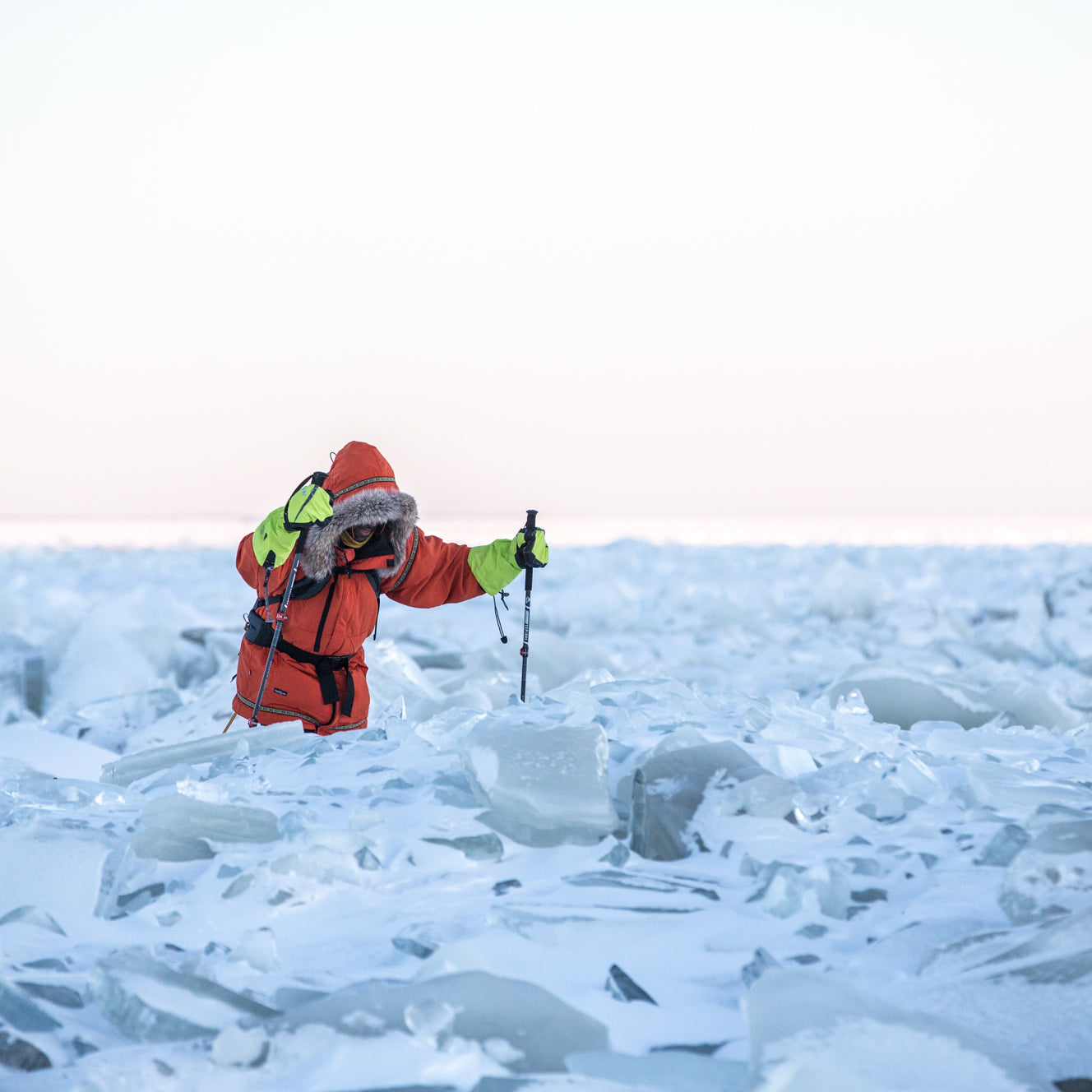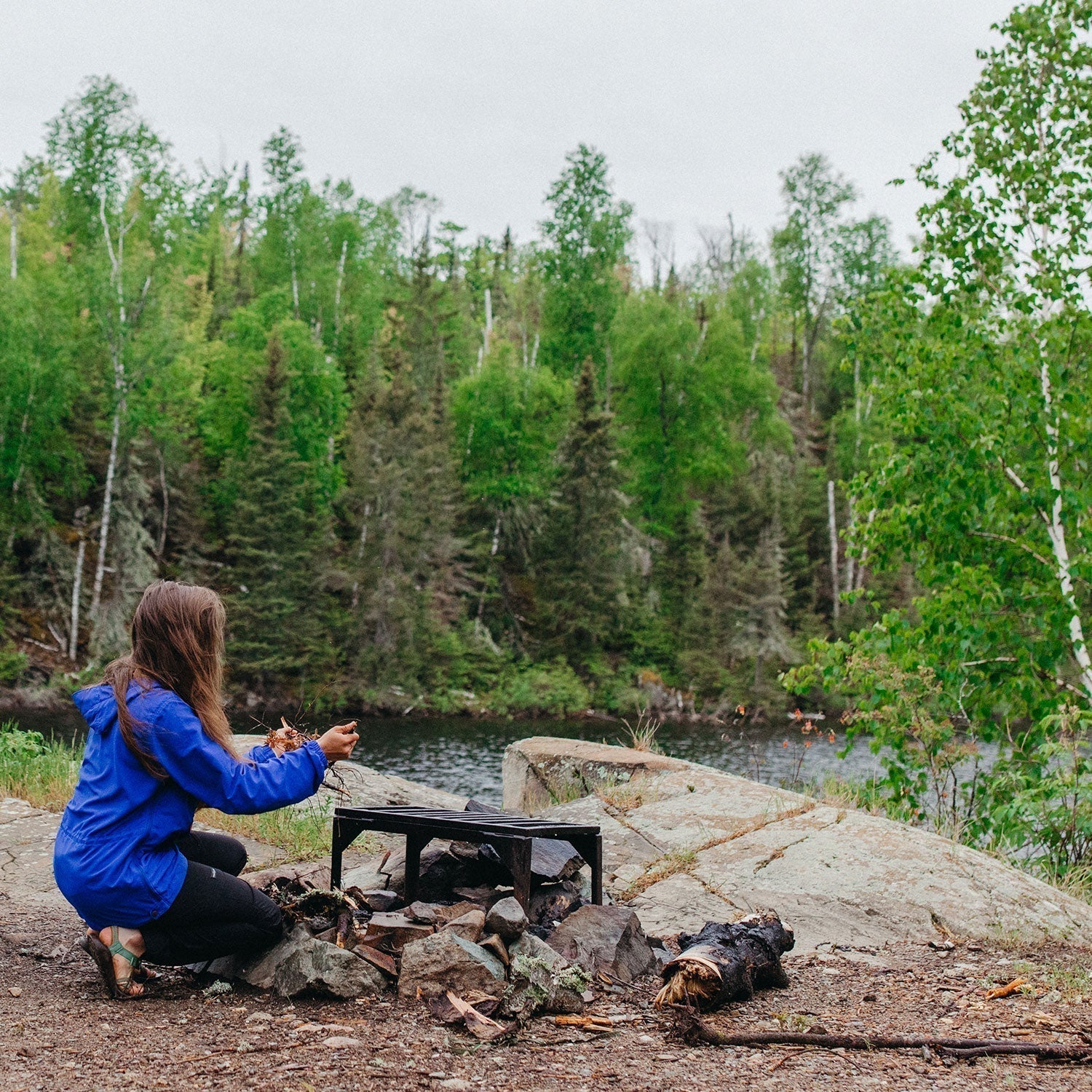When winter sets in—whether you’re in the Northwoods of Minnesota, the Boundary Waters, or preparing for Arctic exploration—the right outerwear is more than just a comfort. It’s a critical choice that can impact your safety, energy, and ability to enjoy the outdoors. One of the most common questions adventurers ask is: Should I choose fleece or down?
Both materials are excellent insulators, but they serve very different purposes. In this guide, we’ll explore the strengths of each, why Wintergreen champions fleece for active winter adventures, and how you can choose the right insulation for your journey.
The Case for Fleece
Fleece was developed to mimic the warmth of wool while being lightweight and versatile. Its biggest strength? It retains warmth even when wet.
That’s crucial when you’re skiing, snowshoeing, dogsledding, or portaging a canoe in the Boundary Waters. Sweat, snow, and moisture are inevitable in these activities, and fleece continues to insulate when damp—unlike down, which collapses under moisture.
Why Wintergreen’s Fleece Stands Out
Not all fleece is equal. Most consumer fleece is lightweight and casual. Wintergreen has ours custom-milled to expedition standards. Our 400-weight fleece is denser, warmer, and more durable than what you’ll find elsewhere. It’s built specifically to meet the demands of Arctic expeditions, filling a gap left by mainstream outdoor gear.
We also use a range of fleece weights across our gear:
-
100 weight (lightweight): Breathable layers, perfect for aerobic activity or as base/mid-layers.
-
200-300 weight (midweight): Warmth for everyday winter activities, versatile mid-layers.
-
400 weight (heavyweight): Expedition-grade, built for extreme cold and heavy use.
Women’s Full-Zip Expedition Fleece Anorak
Men’s Expedition Fleece Anorak – Partial Zip
The Case for Down
Down—made from the fluffy undercoating of ducks or geese—is legendary for its warmth-to-weight ratio. It compresses into small stuff sacks, making it great for ounce-counting backpackers and climbers.
-
Ideal Uses: Low-activity settings like sitting at camp, sleeping, or staying warm in dry, frigid conditions.
-
Advantages: Lightweight, compressible, extremely warm when dry.
Limitations of Down
-
Moisture Sensitivity: If down gets wet—from sweat, snow, or rain—it compresses, losing its loft and insulating power.
-
Drying Time: Once saturated, down takes a long time to dry, possibly freezing in cold climates.
That’s why Wintergreen does not rely on down for active outerwear. In conditions where moisture is unavoidable, fleece is the safer and smarter choice.
Fleece vs. Down: Which is Right for You?
-
Choose Fleece If:
-
You’ll be active outdoors (skiing, dogsledding, hiking, portaging).
-
You need insulation that works even when wet.
-
You want durable, versatile gear for multi-day adventures.
-
Choose Down If:
-
You’re at camp or resting in dry, stable cold.
-
You need maximum warmth-to-weight and compressibility.
-
You want a lightweight backup layer in your pack.
At Wintergreen, we prioritize fleece because our heritage is in active Arctic exploration. Fleece keeps you warm while you move, even when conditions are challenging.
Wintergreen’s Philosophy
When Sue founded Wintergreen, she designed fleece anoraks for Arctic expeditions where conditions are extreme and unforgiving. Over decades, our fleece gear has been trusted in the Boundary Waters, on polar treks, and by outdoor enthusiasts who need performance they can count on.
We don’t chase trends—we build garments that are proven in the field. Every Wintergreen piece is handcrafted in Ely, Minnesota, where we test gear in the same rugged winter conditions our customers face.
Final Thoughts
Both fleece and down have their place. But for active adventures in unpredictable winter conditions, fleece is the reliable, breathable, and field-tested choice. With Wintergreen’s expedition-weight fleece, you’ll stay warm, dry, and ready for whatever the trail throws your way.
Explore our fleece anoraks:
Frequently Asked Questions (FAQ)
Is fleece warmer than down?
Not always. Down provides unmatched warmth-to-weight in dry conditions, but fleece is warmer when wet and better for active use.
When should I choose fleece over down?
If you’re moving, sweating, or exposed to variable weather (snow, sleet, rain), fleece is the safer and more effective choice.
Does down lose warmth when wet?
Yes. Once wet, down collapses and loses insulation until it’s dried, which can take hours.
What fleece weight is best for winter camping?
-
Lightweight (100): Active base or mid-layers.
-
Midweight (200-300): Everyday warmth.
-
Heavyweight (400): Expedition-grade for extreme cold.
Why does Wintergreen prioritize fleece?
Because it’s proven in the Boundary Waters and Arctic expeditions. Our dense, USA-made fleece continues to insulate in the toughest conditions.
Handcrafted in Ely, Minnesota. Proven in the Boundary Waters. Trusted for Arctic adventures.



